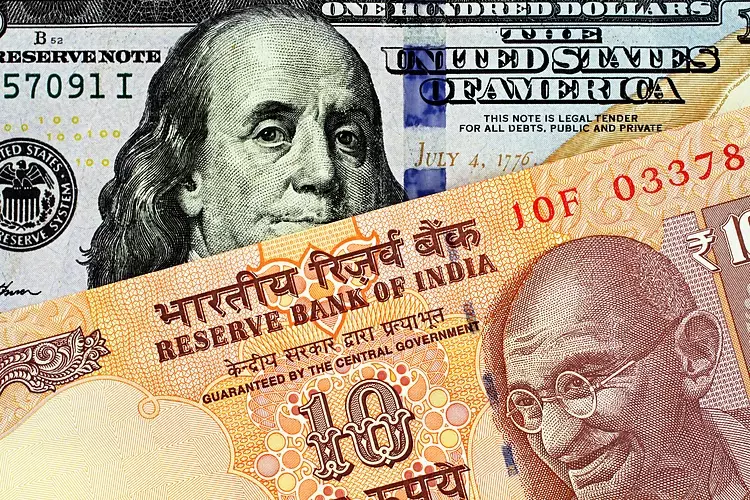The Indian Rupee has experienced a weakening trend in Tuesday’s early Asian session due to month-end USD demand and higher crude oil prices. These factors have put pressure on the INR, causing traders to be cautious in their approach. The recent economic growth data indicating a slowdown in India’s GDP growth rate has also contributed to the negative sentiment surrounding the currency.
Market participants are closely monitoring the upcoming US August CB’s Consumer Confidence report as well as key events later in the week. There is speculation that the Federal Reserve may cut interest rates in September, following dovish remarks from Fed officials. San Francisco Fed President Mary Daly and Richmond Fed President Thomas Barkin have both hinted at the possibility of rate cuts in the near future.
The recent release of US Durable Goods Orders data, showing a significant increase in July, has influenced the trading dynamics of the USD/INR pair. With futures pricing in a 40% chance of a half-percentage point rate cut, the outlook for the pair remains uncertain. The support-turned-resistance level at 84.00 poses a challenge for USD/INR bulls, while the 100-day EMA at 83.57 offers support to the downside.
The Indian Rupee is one of the most sensitive currencies to external factors, particularly due to its dependency on imported oil, trade conducted in USD, and foreign investment levels. The Reserve Bank of India plays a crucial role in maintaining exchange rate stability through intervention in forex markets and interest rate adjustments. Macroeconomic indicators such as inflation, interest rates, GDP growth, balance of trade, and foreign investment inflows all play a significant role in determining the value of the Rupee.
Impact of Inflation and Interest Rates on the Rupee
Higher interest rates typically strengthen the Rupee as they attract foreign investment, leading to increased demand for the currency. Inflation, on the other hand, can have a negative impact on the Rupee by devaluing it through oversupply. The RBI’s policy decisions regarding interest rates and inflation management are crucial in shaping the Rupee’s value in the forex market. A balanced approach is necessary to ensure stability and competitiveness in the currency.
The Indian Rupee’s exchange rate is influenced by a complex interplay of geopolitical, economic, and financial factors. Traders and investors need to carefully analyze these variables to make informed decisions in the forex market. The RBI’s proactive intervention and policy measures are essential in maintaining stability and promoting growth in the Indian economy. By understanding the dynamics of the Rupee exchange rate, market participants can navigate through volatility and capitalize on emerging opportunities.

